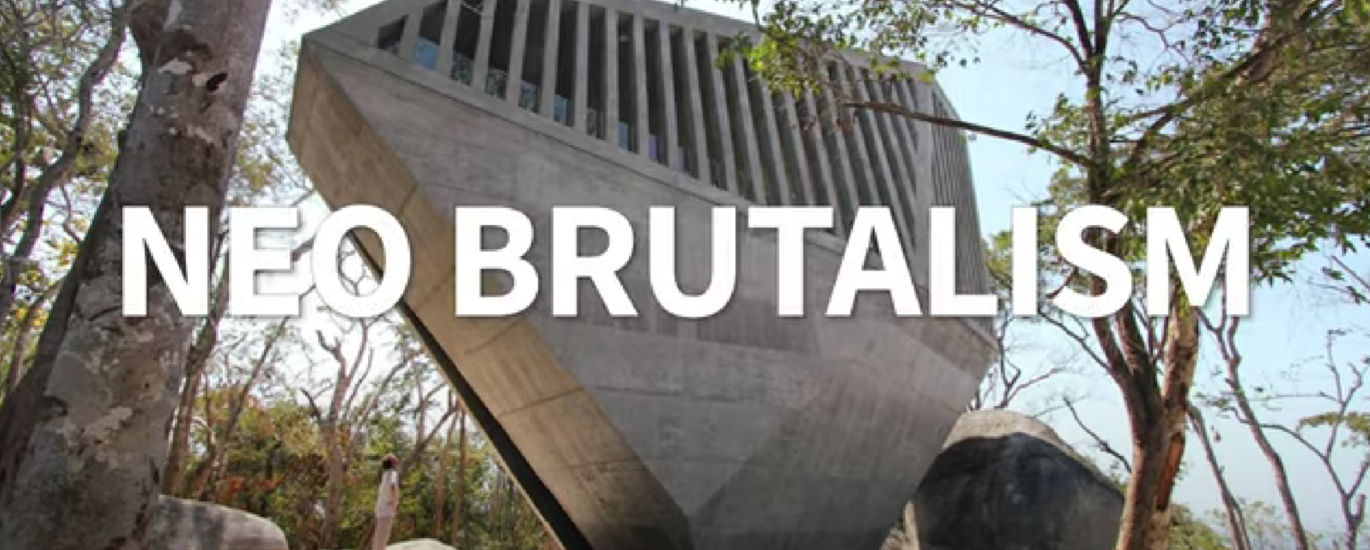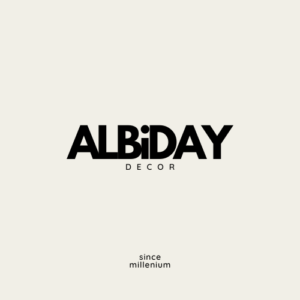The Story of Brutalism & Its Evolution into Neo-Brutalism
Brutalism emerged in the mid-20th century as a response to post-war reconstruction, prioritizing functionality, honesty in materials, and an imposing presence. The movement, rooted in “béton brut” (raw concrete), was pioneered by architects like Le Corbusier, Alison and Peter Smithson, and Paul Rudolph. These structures, often monolithic and geometric, embraced raw textures, exposed concrete, and a sense of permanence—rejecting ornamentation in favor of pure, structural expression.
However, as time passed, Brutalism became controversial. Critics called it cold, oppressive, and even dystopian, leading to its decline by the late 20th century. Many Brutalist structures were demolished, yet the philosophy behind the movement—honesty in materials, bold geometry, and function-driven design—remained influential.
The Rise of Neo-Brutalism
In the 21st century, Brutalism has found a new identity in the form of Neo-Brutalism—a revival that blends the raw power of Brutalism with contemporary aesthetics and functionality. Instead of relying solely on concrete, Neo-Brutalism incorporates wood, metal, glass, and digital design elements while preserving the essence of minimalism, geometric forms, and exposed materials.
This modern adaptation is not just architectural—it has expanded into graphic design, web design, and interior spaces, emphasizing bold compositions, industrial textures, and a stripped-down approach that resonates with today’s aesthetic sensibilities. Unlike the stark, heavy presence of traditional Brutalism, Neo-Brutalism often integrates warmer elements and advanced technology, making it more approachable and adaptable to various spaces.
Neo-Brutalism in Interior & Commercial Spaces
In interior design, Neo-Brutalism reinterprets its predecessor by pairing raw materials with refined details—cement walls softened by warm wooden panels, hidden LED lighting, and sleek, industrial furniture. Spaces such as modern listening bars, boutique hotels, and avant-garde offices embrace Neo-Brutalist principles, creating environments that feel bold yet livable.
This evolution makes Neo-Brutalism more than just a revival—it’s a transformation, balancing brutal honesty with modern comfort, proving that the movement was never just about concrete, but about authenticity, structure, and the emotion that raw materials can evoke in a space.
ความเป็นมาของ Brutalism และการพัฒนาไปสู่ Neo-Brutalism
บรูทัลลิสม์ (Brutalism) เกิดขึ้นในช่วงกลางศตวรรษที่ 20 เพื่อตอบสนองต่อยุคหลังสงคราม โดยเน้น ฟังก์ชัน, ความซื่อตรงของวัสดุ, และความแข็งแกร่งของโครงสร้าง สถาปัตยกรรมนี้ได้รับแรงบันดาลใจจากคำว่า “béton brut” ซึ่งหมายถึง “คอนกรีตดิบ” ถูกนำเสนอโดยสถาปนิกชื่อดังอย่าง Le Corbusier, Alison และ Peter Smithson, Paul Rudolph รูปแบบของอาคารเน้นความแข็งแกร่ง, โครงสร้างเรขาคณิตที่ชัดเจน และเนื้อแท้ของวัสดุโดยไม่มีการตกแต่งที่เกินจำเป็น
อย่างไรก็ตาม เมื่อเวลาผ่านไป บรูทัลลิสม์กลับกลายเป็นที่ถกเถียง หลายคนมองว่าเป็นสไตล์ที่ แข็งกระด้าง, ไร้ชีวิตชีวา และดูล้าสมัย ทำให้ช่วงปลายศตวรรษที่ 20 ความนิยมลดลง หลายอาคารถูกทุบทิ้ง แต่นั่นไม่ได้หมายความว่าหลักการของบรูทัลลิสม์จะจบลง ตรงกันข้าม แนวคิดเรื่อง “วัสดุแท้, ความเรียบง่าย, และโครงสร้างที่บ่งบอกตัวตน” ยังคงเป็นแรงบันดาลใจสำคัญ
การเกิดใหม่ของนีโอบรูทัลลิสม์ (Neo-Brutalism)
ในศตวรรษที่ 21 บรูทัลลิสม์ได้ถูก ตีความใหม่ ในรูปแบบของ นีโอบรูทัลลิสม์—ซึ่งเป็นการผสมผสานระหว่าง พลังดิบของบรูทัลลิสม์เข้ากับความร่วมสมัยและการใช้งานที่ยืดหยุ่นขึ้น
แทนที่จะใช้แค่คอนกรีตเปลือยแบบเดิม นีโอบรูทัลลิสม์ได้ผสมผสานวัสดุอื่น ๆ เช่น ไม้, โลหะ, กระจก และองค์ประกอบดิจิทัล แต่ยังคงรักษาเอกลักษณ์ของ รูปทรงเรขาคณิตที่เรียบง่าย, โครงสร้างเปิดเผย และแนวคิดที่ให้ความสำคัญกับฟังก์ชันมากกว่าความฟุ่มเฟือย
นอกจากด้านสถาปัตยกรรมแล้ว นีโอบรูทัลลิสม์ยังขยายไปสู่ การออกแบบกราฟิก, เว็บไซต์ และการออกแบบภายใน โดยใช้รูปแบบที่ดูแข็งแกร่ง มีพื้นผิวอุตสาหกรรม และหลีกเลี่ยงการตกแต่งที่ซับซ้อน
นีโอบรูทัลลิสม์ในการออกแบบภายในและพื้นที่เชิงพาณิชย์
สำหรับการออกแบบภายใน นีโอบรูทัลลิสม์ถูกนำมาตีความใหม่โดยการจับคู่ วัสดุเปลือยกับองค์ประกอบที่นุ่มนวลขึ้น เช่น ผนังคอนกรีตที่ตัดกับแผ่นไม้, แสง LED ซ่อนตัว, และเฟอร์นิเจอร์สไตล์อินดัสเทรียลที่ดูโฉบเฉี่ยว เราจะเห็นแนวคิดนี้ในสถานที่อย่าง Listening Bar, คาเฟ่สไตล์ลอฟท์, โรงแรมบูทีค และออฟฟิศดีไซน์ล้ำสมัย
นี่จึงเป็นเหตุผลที่ทำให้ นีโอบรูทัลลิสม์ไม่ได้เป็นเพียงแค่การฟื้นคืนชีพของสไตล์เดิม แต่มันคือการพัฒนาไปสู่สิ่งใหม่ ที่สามารถสร้างความสมดุลระหว่าง ความแข็งแกร่งของโครงสร้างกับความรู้สึกสบายและความร่วมสมัย พิสูจน์ให้เห็นว่าบรูทัลลิสม์ไม่เคยเป็นแค่ “สไตล์ที่แข็งกระด้าง” แต่มันคือการออกแบบที่มีความ จริงแท้ (Authenticity), โครงสร้างที่มั่นคง และอารมณ์ที่ถูกถ่ายทอดผ่านวัสดุ
บทสรุป
นีโอบรูทัลลิสม์ไม่ใช่เพียงการนำบรูทัลลิสม์กลับมา แต่เป็นการวิวัฒนาการไปสู่รูปแบบที่ทันสมัยขึ้น โดยผสมผสานความดิบของโครงสร้างเข้ากับรายละเอียดที่ปราณีตและการใช้งานที่ตอบโจทย์ยุคปัจจุบัน



